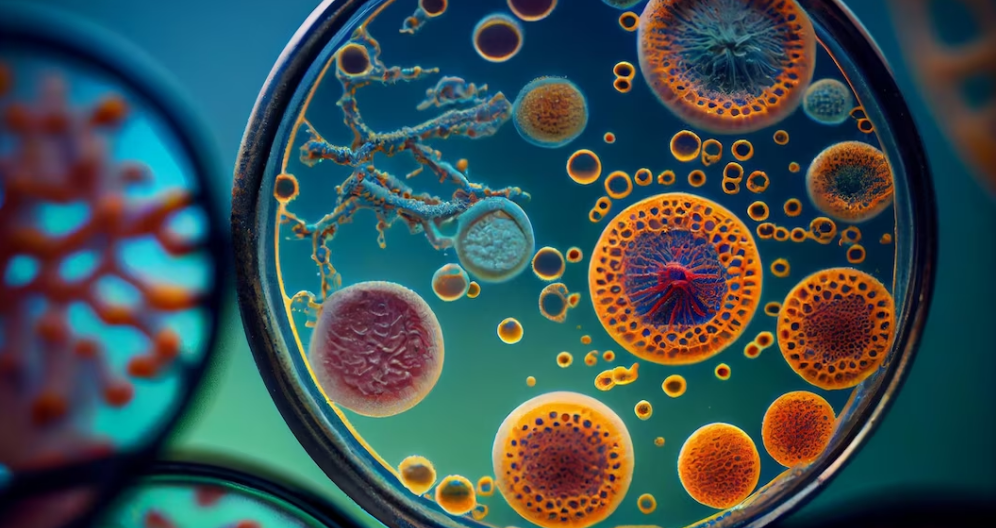Biopharmaceuticals represent one of the key therapeutic modalities in the modern healthcare industry, given their therapeutic potential and favorable safety profiles. Driven by several blockbuster products and burgeoning pipelines, biologics and their manufacturing has become a key focus area for stakeholders engaged in the pharmaceutical industry. However, biologic manufacturing is often fraught with various challenges, including inconsistencies related to quality of the final product, facility limitations, high attrition rate of pipeline candidates, prolonged development timelines, and regulatory / compliance-related issues. Therefore, therapy developers are actively exploring approaches that will enable them to overcome the existing challenges. Amongst these alternatives, cell free expression (which uses biological machinery of cells for target molecule synthesis) has become a preferred option for manufacturing of various types of therapeutically important biologics and high-value small molecules. The global cell free expression market is anticipated to grow at a CAGR of around 7.5%, till 2035. Driven by the rising demand for biologics across various regions, the cell free expression market is anticipated to witness steady growth in the coming decade.
INTRODUCTION TO CELL FREE SYSTEMS
Cell-free systems are in-vitro platforms which allow occurrence of biochemical reactions in the absence of living cells. These systems utilize bio machinery harvested from the lysate of disrupted cells for the manufacturing of a wide array of macromolecular and small molecule products. Cell-free systems can be broadly categorized into following classes:
§ Reconstituted systems: These types of cell free systems are prepared using various factors which are essential for protein synthesis, including tRNAs, purified enzymes, amino acids, ribosomes, and energy molecules. Such systems provide control over the components used for the synthesis of target products making it easier to manipulate the contents according to specific needs.
§ Crude cell lysate-based systems: These types of cell free systems consist of biocatalysts derived from cell lysis, and are commonly prepared from Escherichia coli, rabbit reticulocytes, Saccharomyces cerevisiae, wheat germ, and insect cells. It is worth mentioning that crude cell extract based cell free systems are less expensive and provide higher yields as compared to reconstituted systems.
OVERVIEW OF CELL FREE BIOMANUFACTURING
Cell-free biomanufacturing is the process through which different biomolecules can be synthesized without the use of living cells. In this process cell free systems are used for production of different types of biomolecules, including cytotoxic proteins, fusion proteins, post translationally modified proteins, antibodies, enzymes, vaccines, and other complex proteins. This is an emerging platform with various potential applications; however, a few associated constraints may pose a hurdle for its adoption. Key advantages and challenges associated with cell free biomanufacturing are briefly described below.
ADVANTAGES
Various advantages associated with cell free biomanufacturing are described below:
§ High Scalability: Cell-free systems allow consistent manufacturing of target products at varying scales of production (very small scales (microliter) to a very large scale (1000 L)), from the same stockpile of reagents.
§ Better Control Over the Process: Absence of cell walls in cell free systems helps in optimizing various steps of the biomanufacturing process by facilitating the addition / removal of enzymes and cofactors (which are continuously produced and degraded at varying rates by living cells), as well as enabling direct monitoring of entire process.
§ High Stability of Reagents: Reagents used in cell free biomanufacturing can be stored in a stable lyophilized format which can be transported to the site when required.
§ Shorter Manufacturing Timeline: Cell-free systems allow rapid manufacturing of time-sensitive products (such as therapies / vaccines against a pandemic threat) from the previously harvested active ribosomes and other necessary cellular machinery.
CHALLENGES
Various challenges associated with cell free biomanufacturing are described below:
§ Expensive Process: Individual components / reagents used in cell free biomanufacturing process are expensive due to their high purification costs. Further, components of reconstituted cell free systems need to be purified individually, which makes it costlier than cell-based expression systems.
§ High Variation in End Product: There maybe be batch-to-batch variations in final products synthesized from cell free systems due to slight variations in lysates / fermentation media / manufacturing formats (batch, fed-batch, and semi-continuous / continuous exchange operational formats). Standardization of individual components is required in order to avoid differences in results.
§ Limited Success: Presently, no therapeutic being produced using cell free biomanufacturing approach has received approval. Although, it is worth highlighting that FDA has approved the clinical trial of Sutro Biopharma’s antibody-drug conjugate candidate which has been manufactured using cell free systems.
APPLICATIONS IN HEALTHCARE DOMAIN
In the healthcare industry, cell free systems are primarily being used for the production of therapeutically important biologics, including membrane proteins, toxic proteins, monoclonal antibodies (MAbs), antimicrobial peptides (AMPs), vaccines, as well as high-value small molecule therapeutics. Detailed applications of cell free biomanufacturing in biopharmaceuticals production are briefly described below.
§ Toxic Proteins and Membrane Proteins: Majority of proteins used in biopharmaceutical production are toxic proteins / membrane proteins. Owing to their complex structure, low efficiency, toxic nature and complex manufacturing process, expression of these proteins remains a critical bottleneck in protein research. Alternatively, as cell free protein synthesis (CFPS) systems lack cell wall and constraints associated with cellular growth, they are currently being utilized for the production of toxic and membrane proteins.
§ Monoclonal Antibodies: With high target specificities and favorable safety profiles, monoclonal antibodies have emerged as a prominent class of therapeutics. Traditionally, most monoclonal antibodies are produced in Chinese hamster ovary (CHO) cells, which is a complex and time-consuming process. Conversely, cell free platforms offer several advantages over traditional methods, including faster production timeline, lower costs, and higher product yields (0.55 grams of MAb/L/day).
§ Vaccines: Vaccines are versatile preventive formulations that have, so far, enabled the global eradication of debilitating viral diseases, such as smallpox and polio. The COVID-19 pandemic and monkeypox outbreak of 2022 have shifted the focus on immunization and vaccine production. Presently, vaccines are synthesized using cell-based systems which is a costly and slow process. Alternatively, conjugate vaccines can be synthesized using cell free platforms which offer faster production times and portable vaccine delivery in comparison to traditional cell-based systems.
§ Highly Toxic Small Molecules: Aided by the ongoing advancements in clinical pharmacology and oncology research, as well as the rising demand for targeted therapies, high potency active pharmaceutical ingredients (HPAPIs) and cytotoxic drugs have emerged as one of the key areas of interest for researchers and drug developers worldwide. However, HPAPIs are very toxic and therefore present challenges for manufacturing in traditionally used cell-based systems (which are sensitive to cytotoxic conditions). Cell free systems circumvent the limitations of conventional cell-based systems, as these platforms are resistant to toxic conditions and are not bound by cellular homeostatic concerns.
§ Antimicrobial Peptides: Owing to their diverse targets, functions, and importance in combating antibiotic resistance, AMPs have emerged as an important therapeutic class. Cell free expression platforms are currently being utilized for the production of AMPs, including human β-defensin-2 and magainin-2 (which display antimicrobial activity). These systems could be further optimized to produce AMPs on larger scales.
Applications in Other Domains
In addition to the healthcare industry, other industries, such as food industry, cosmetics industry, and enzyme synthesis industry, are also benefiting from the cell free manufacturing process. Various applications of cell free systems in domains other than biopharmaceutical industry are briefly described below.
§ Food Biotechnology: Presently, nutraceuticals and natural ingredients are the key focus areas in the domain of food biotechnology. Natural ingredients are synthesized using traditional microbial platforms, some of the key challenges associated with this approach include limited product yields, time-consuming production process and inability to synthesize complex ingredients. Conversely, cell free systems offer several advantages over traditional cell-based systems, including higher product yields. Moreover, they are more resilient to pH changes, allowing the production of higher quality products that closely imitate natural products.
§ Cosmetics Industry: Several biomolecules, specifically proteins and fatty acids are used for the production of cosmetics. Rising demand for these biomolecules has prompted the stakeholders in this domain to rely on cell free production owing to its various advantages. It is worth mentioning that collagen, which is an important component of several cosmeceutical products, can be synthesized using cell free systems.
§ Enzymes Industry: Although the cell free production of industrial enzymes (such as laccase and cellulose) and other enzymes (involved in biopolymer production) that are traditionally synthesized using Bacillus subtilis bacterium is not well researched, cell free systems of Bacillus subtilis have been discovered. For instance, Enzymit, a bioproduction firm, utilizes cell free technology to synthesize novel enzymes at lower costs.
FUTURE PERSPECTIVE
Since the introduction of cell free systems in the early 1900s, the platform has evolved considerably, with several technological advancements allowing the use of such systems for industrial production. Further, other improvements, including efficient production cycles, use of low-cost reagents and development of purified component platforms, have made cell free biomanufacturing a preferred option for synthesis of various types of biologics and small molecules. Although such systems are still plagued with various challenges, cell free systems continue to improve at a rapid pace. It is worth highlighting that companies, such as Nuclera Nucleics, Liberum Bio and Tierra Biosciences, have developed their own on-demand systems, suggesting that the use of cell free systems will continue to address the bottlenecks stemming from conventional biomanufacturing platforms.
About Roots Analysis
Roots Analysis is a global leader in the pharma / biotech market research. Having worked with over 750 clients worldwide, including Fortune 500 companies, start-ups, academia, venture capitalists and strategic investors for more than a decade, we offer a highly analytical / data-driven perspective to a network of over 450,000 senior industry stakeholders looking for credible market insights. All reports provided by us are structured in a way that enables the reader to develop a thorough perspective on the given subject. Apart from writing reports on identified areas, we provide bespoke research / consulting services dedicated to serve our clients in the best possible way.




